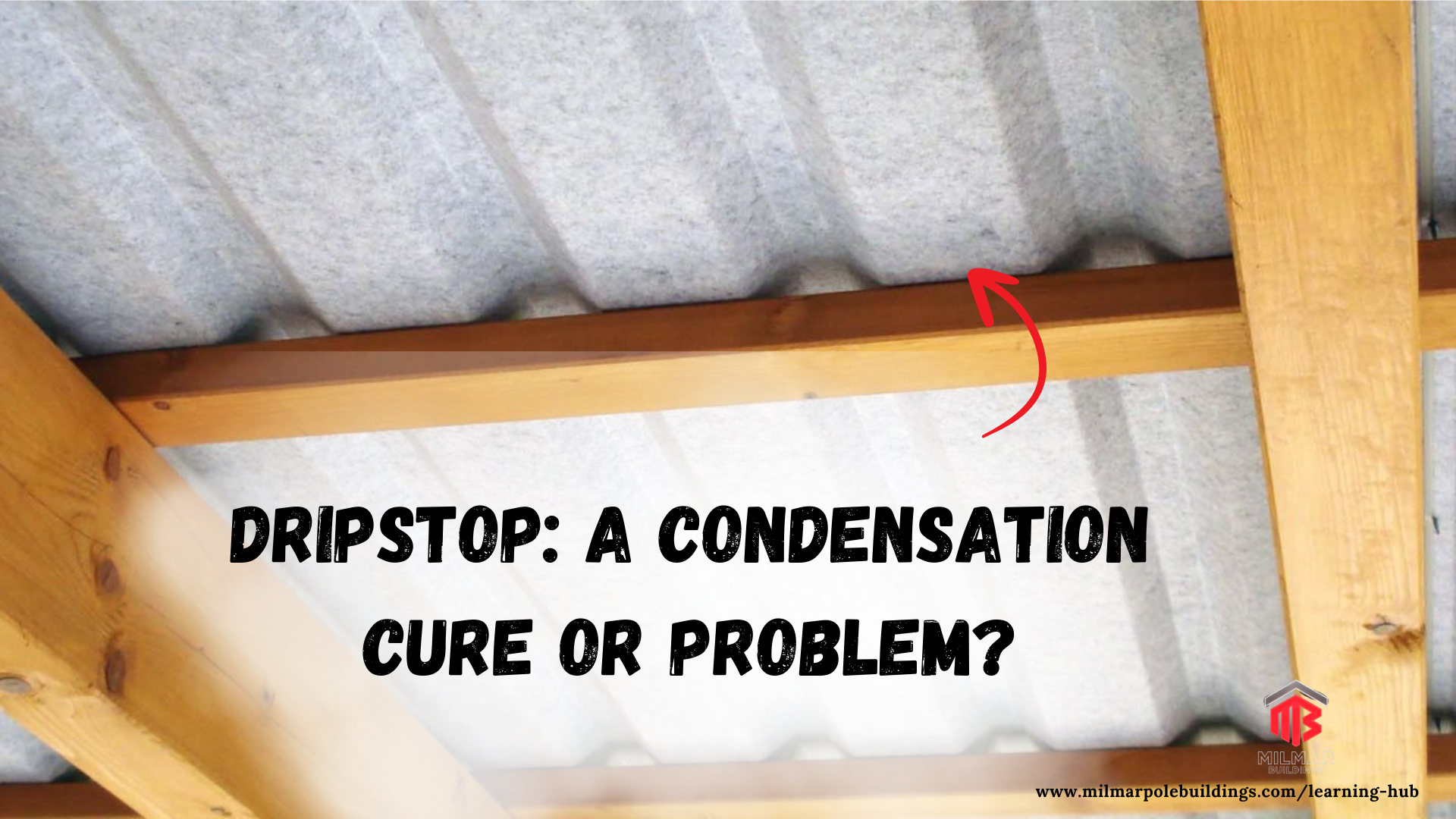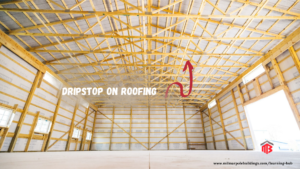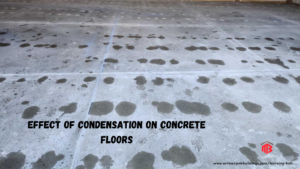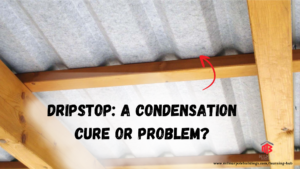
Decoding DripStop
A Pole Barn Owner’s Guide to Condensation Control
Explore the effectiveness of DripStop in preventing condensation in pole barns. Uncover valuable insights for pole barn owners and enthusiasts, including alternative solutions and reasons behind persistent condensation. Find out how long it takes for DripStop to work and discover tips for optimal results.
Condensation is the silent enemy of pole barns, causing damage that often goes unnoticed until it’s too late. Enter DripStop, a solution claiming to be the antidote to condensation-related headaches. But does it really work? Let’s cut through the fog and get to the bottom of this.
The DripStop Promise
DripStop boasts of being the panacea for condensation problems in pole barns. The question on every pole barn owner’s mind: Does it live up to the hype? In a word, yes. Applied to the roof’s underside, DripStop creates a barrier that prevents condensation from forming and dripping onto your valuable possessions.
Reasons for Condensation Persistence
Even with DripStop, condensation issues might linger. Understanding the root causes is crucial. Poor ventilation, inadequate insulation, and temperature differentials can contribute to ongoing condensation. Despite its claims, DripStop may not be the silver bullet for everyone. Persistent condensation requires a closer look at ventilation systems, insulation gaps, and potential leaks. Don’t just rely on DripStop; assess your barn’s overall moisture management.
Patience Pays off
You’ve poured in DripStop, but when can you expect results? Patience is key. It takes time for the solution to work its magic. While DripStop offers immediate relief, its complete effectiveness might take a couple of months as the building concrete is cured and moisture is kept out of the building. Factors such as temperature and humidity play a role, so be patient and allow time for the product to create its protective shield.
Breaking Down the Costs
Despite DripStop’s application, condensation may linger. A key reason could be insufficient coverage or incorrect application. Ensure you’ve covered all areas and followed the product’s application guidelines diligently. Additionally, poor ventilation and insulation issues may contribute to persistent condensation.
Alternatives and Additional Measures
If DripStop doesn’t entirely solve your condensation woes, explore alternatives. Enhance insulation, improve ventilation, and ensure proper drainage. Consulting with experts can provide tailored solutions based on your pole barn’s unique conditions. Most emphasize the importance of combining DripStop with comprehensive moisture management. A well-ventilated and properly insulated pole barn is more likely to resist condensation, making this method more effective. Book a consultation with us today!
Design Your Post-Frame Barn or Garage With MilMar Buildings!
Conclusion
In conclusion, DripStop can be a valuable tool in your arsenal against condensation, but it’s not a standalone solution. Pole barn owners must adopt a holistic approach, addressing insulation, ventilation, and potential leaks.
It’s easy to get caught up in solutions and applications, but pole barns, like any structure, require a human touch. Regular check-ins, inspections, and addressing issues promptly contribute significantly to maintaining a condensation-free environment.
MilMar Buildings is more than capable of assisting you with your post-frame building project. Speak with our experts today!
Written by Shane Ferris
If you have any additional inquiries that haven’t been addressed in this article, please don’t hesitate to reach out. For assistance with designing and planning your project, you can contact MilMar Buildings at 260-440-3190 or send us an email by clicking here. Our dedicated Customer Engagement Team will be happy to assist you in determining the next steps for your project.




